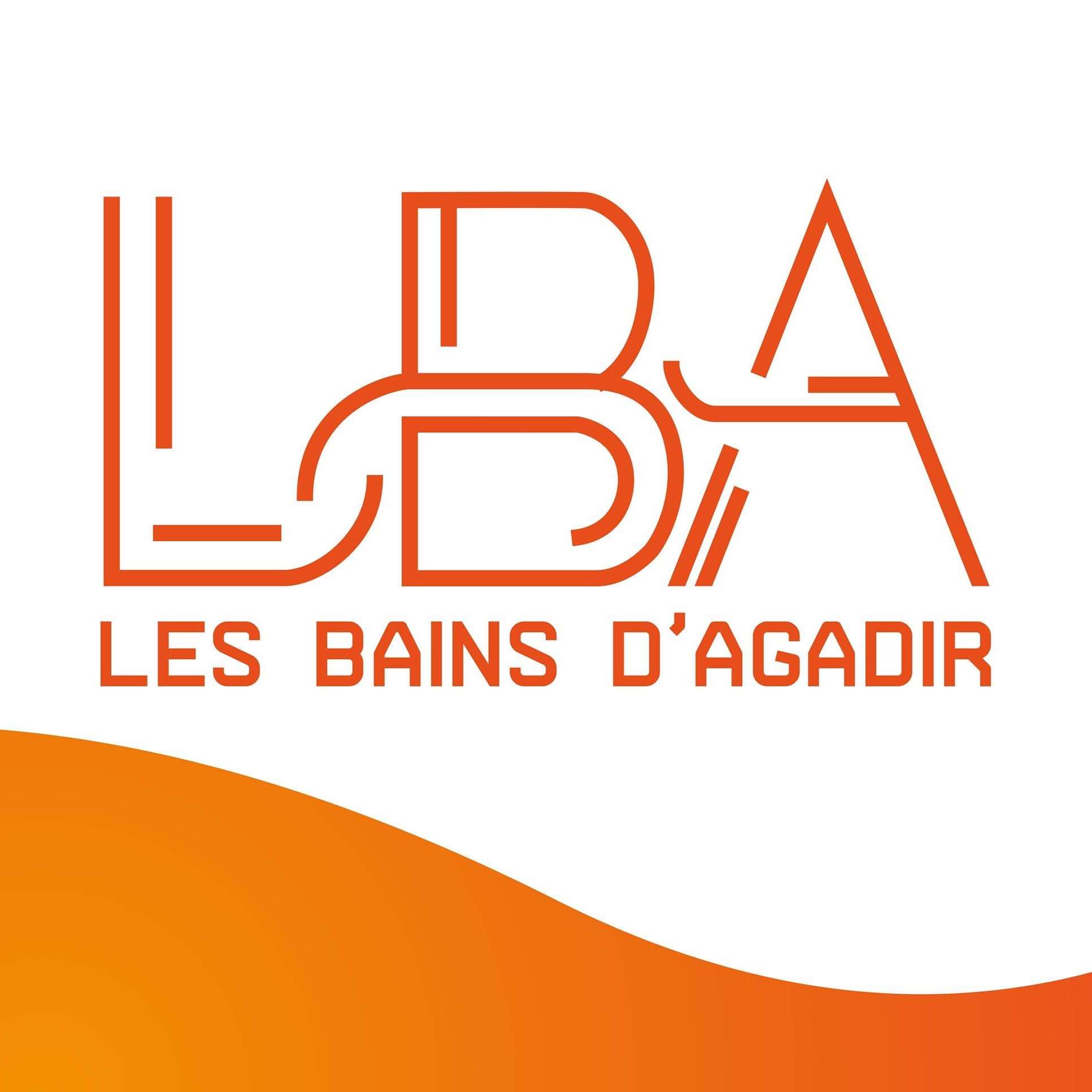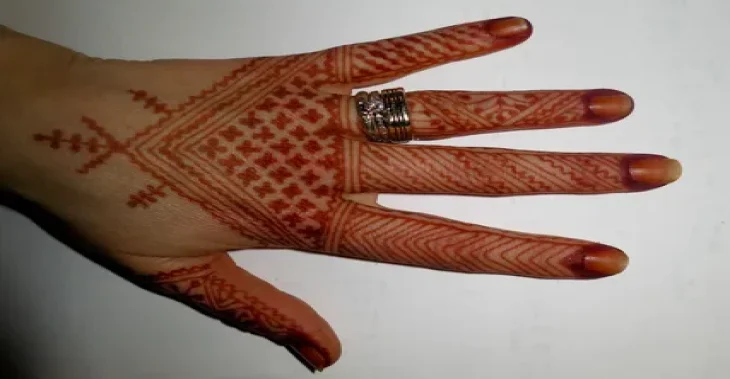
The Different Types of Henna Designs in Morocco
The Different Types of Henna Designs in Morocco
Introduction: Henna, an ancient art form that has adorned the bodies of Moroccan individuals for centuries, continues to captivate with its intricate beauty and cultural significance. From the geometric precision of Moroccan designs to the organic simplicity of Amazigh patterns and the free-flowing spirit of Saharan compositions, the diverse array of henna designs in Morocco reflects the country’s rich heritage and regional influences. In this article, we will delve into the captivating world of Moroccan henna, exploring its various styles and shedding light on the symbolism and traditions associated with this revered form of body art.
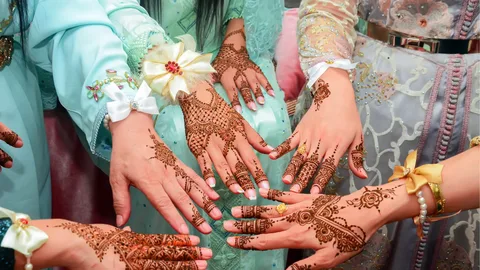
Henna, also known as Mehndi, holds a significant cultural and artistic value in Morocco. This ancient form of body art has been practiced for centuries, and it continues to captivate people with its intricate patterns and rich symbolism. In this article, we will explore the various types of henna designs that are prevalent in Morocco, showcasing the beauty and diversity of this traditional art form.
Henna Designs: An Introduction
As the word « henna » suggests, this art form involves the application of a paste made from the henna plant to the skin. The paste leaves behind a reddish-brown stain, creating temporary designs that last for several days. These designs are often applied during special occasions and celebrations, such as weddings, festivals, and religious ceremonies.
The Significance of Henna in Moroccan Culture
Henna holds a deep cultural significance in Morocco. It is believed to bring good luck, protection, and blessings to the wearer. It symbolizes joy, beauty, and the celebration of important milestones in life. Moroccan brides, in particular, adorn themselves with intricate henna designs as a symbol of fertility, love, and prosperity.
Different Styles of Henna Designs in Morocco
Morocco boasts a rich tapestry of henna designs, each with its own unique characteristics and regional influences. Let’s delve into some of the most popular styles:
1. Moroccan Geometric Designs
Moroccan geometric designs are characterized by symmetrical patterns, intricate shapes, and repetitive motifs. These designs often feature interlocking squares, triangles, and diamonds, creating an aesthetically pleasing and mesmerizing effect. Geometric henna designs are widely appreciated for their precision and elegance.
2. Amazigh (Berber) Henna Designs
The Amazigh people, also known as Berbers, have a distinct henna tradition that reflects their cultural heritage. Amazigh henna designs often incorporate symbols of nature, such as flowers, leaves, and animals. These designs are known for their simplicity, organic forms, and the use of bold lines and dots.
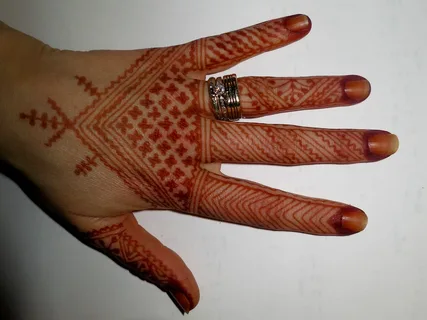
3. Saharan Henna Designs
Saharan henna designs are influenced by the traditions of the nomadic tribes inhabiting the vast desert regions of Morocco. These designs are characterized by their bold, free-flowing patterns that reflect the spirit of the desert. Saharan henna designs often feature elements such as camels, palm trees, and intricate geometric shapes inspired by the sand dunes.
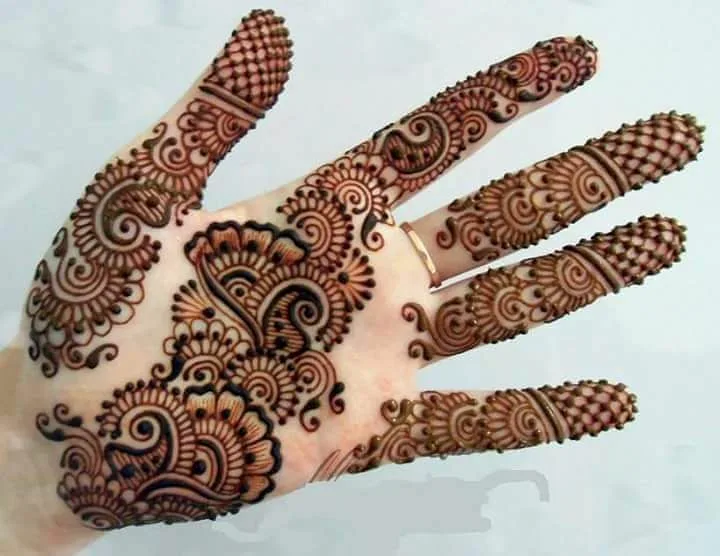
4. Fassi Henna Designs
Originating from the city of Fes, Fassi henna designs are renowned for their intricacy and attention to detail. These designs often incorporate delicate floral motifs, arabesque patterns, and ornate borders. Fassi henna designs exemplify the fusion of Moroccan and Andalusian influences, resulting in exquisite and elaborate compositions.
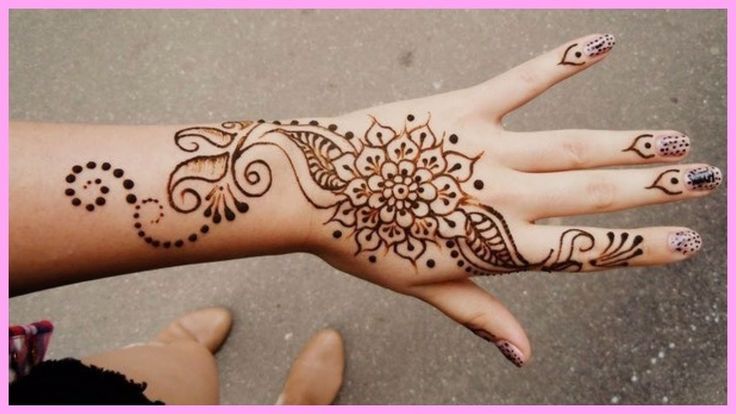
5. Contemporary Henna Designs
In addition to the traditional styles, contemporary henna designs have emerged in recent years, influenced by modern trends and global inspirations. These designs often combine traditional motifs with contemporary elements, incorporating elements such as butterflies, peacocks, and intricate lace-like patterns. Contemporary henna designs offer a fresh take on this ancient art form, appealing to a wider audience.
Exploring the Diversity of Henna Designs in Morocco
Henna designs in Morocco reflect the country’s diverse cultural heritage and regional influences. From the geometric precision of Moroccan designs to the organic simplicity of Amazigh patterns and the free-flowing spirit of Saharan compositions, each style offers a unique visual experience.
To delve deeper into the world of Moroccan henna designs, you can explore various online resources, such as:
By immersing yourself in the beauty and intricacy of Moroccan henna designs, you will gain a deeper appreciation for this cherished art form and the cultural heritage it represents.
Remember, the art of henna is a beautiful and timeless tradition that continues to inspire and captivate people around the world.
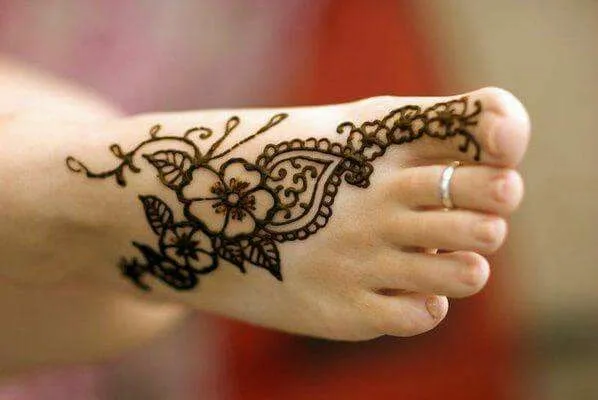
FAQ: Frequently Asked Questions about Moroccan Henna Designs
1. How long does the henna stain typically last?
The longevity of a henna stain depends on various factors, including the quality of the henna paste, the individual’s skin type, and the aftercare. On average, henna stains can last anywhere from 5 to 14 days. However, it’s important to note that the intensity of the stain will gradually fade over time as the outer layer of the skin naturally exfoliates.
2. Can henna designs be customized according to personal preferences?
Absolutely! One of the fascinating aspects of henna is its versatility and adaptability. Henna artists in Morocco are skilled at creating personalized designs based on individual preferences. Whether you desire a specific pattern, symbol, or meaningful element incorporated into the design, communicate your ideas to the henna artist, and they will work their magic to bring your vision to life.
3. Are there any specific occasions when henna is traditionally applied in Morocco?
Henna holds a special place in Moroccan culture and is often applied during various celebratory occasions. Weddings are the most prominent events where henna plays a significant role. The bride, her female relatives, and friends gather for a henna ceremony where intricate designs are applied to the bride’s hands and feet. Henna is also commonly seen during festivals, religious holidays, and other joyous gatherings.
4. What are some traditional symbols and motifs used in Moroccan henna designs?
Moroccan henna designs incorporate a range of symbols and motifs that hold cultural significance. Common symbols include flowers (such as roses and jasmine), leaves (representing growth and fertility), geometric shapes (depicting balance and harmony), and abstract patterns inspired by nature. Additionally, symbols like the evil eye (to ward off negative energy) and the hand of Fatima (a symbol of protection) can also be seen in Moroccan henna designs.
5. Are there any precautions one should take before getting a henna design?
Before getting a henna design, it is essential to ensure that you are not allergic to henna. Conduct a patch test on a small area of your skin and wait for any adverse reactions. It’s also advisable to have clean, exfoliated skin to achieve the best results. If you have any specific concerns or medical conditions, consult with a henna professional beforehand.
6. Can men also get henna designs in Morocco?
While henna is traditionally associated with women in Moroccan culture, it is not uncommon for men to embrace henna designs as well. Men often opt for simpler and bolder designs, focusing on geometric patterns or symbols that hold personal significance to them. Henna has become a form of self-expression for both men and women, allowing individuals to showcase their creativity and cultural pride.
7. How can one maintain and prolong the life of a henna stain?
To ensure a longer-lasting henna stain, it is recommended to avoid excessive contact with water for the first 24 hours after application. Afterward, moisturizing the henna design with natural oils, such as olive oil or coconut oil, can help keep the skin hydrated and enhance the longevity of the stain. Additionally, minimizing exposure to harsh chemicals and exfoliating agents will contribute to maintaining the henna design for a longer period.
8. Can henna designs be removed if desired?
Henna designs are temporary and will naturally fade over time. However, if you wish to remove the henna stain quickly, there are a few methods you can try. Lemon juice mixed with sugar can be applied to the henna design, as the acidity helps in lightening the stain. Alternatively, soaking the hennaed area in warm water and gently scrubbing with a loofah or exfoliating glove can help speed up the fading process.
9. Are there any superstitions or beliefs associated with henna in Morocco?
In Moroccan culture, henna is believed to possess protective and auspicious qualities. It is thought to ward off evil spirits, bring good luck, and bless the wearer with prosperity and fertility. Henna ceremonies are often seen as a way to bless and celebrate important life events, symbolizing joy and positive energy.
10. Can henna designs be combined with other forms of body art?
Absolutely! Henna designs can be seamlessly combined with other forms of body art, such as tattoos or metallic body paint, to create a unique and stunning look. This fusion of artistic expressions allows individuals to explore their creativity and showcase their personal style. The possibilities are endless when it comes to combining henna with other body art forms, resulting in captivating and one-of-a-kind designs.
Please note that the information provided above is for general guidance, and it’s always best to consult with a professional henna artist for personalized advice and recommendations based on your specific needs and preferences.
Exclusive henna designs by « les bains d’agadir »
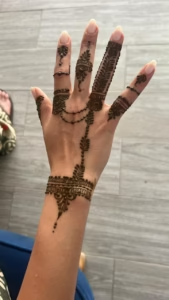

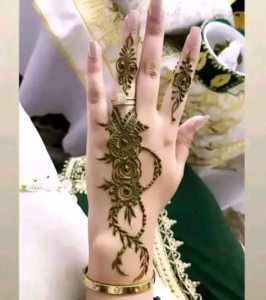
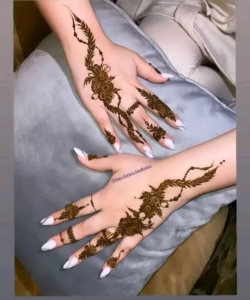
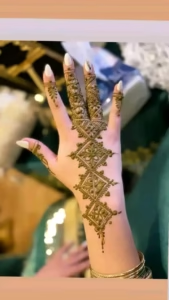
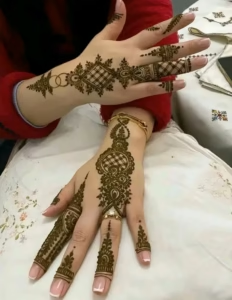
Conclusion: The world of henna in Morocco is a testament to the country’s rich cultural tapestry and artistic heritage. From the moment the henna paste is applied to the skin to the gradual transformation of the design into a stunning reddish-brown stain, henna encapsulates the beauty, joy, and traditions of Moroccan society. Whether it’s the mesmerizing geometric precision, the organic simplicity of Amazigh designs, or the free-flowing spirit of Saharan compositions, each henna style tells a story, representing the region it originates from and the cultural symbolism it embodies.
Moroccan henna designs continue to evolve, with contemporary influences breathing new life into this ancient art form. As henna transcends cultural boundaries and captivates people around the world, its timeless beauty serves as a reminder of the rich artistic heritage that unites us all. So, embrace the allure of Moroccan henna, explore its myriad styles, and let the intricate patterns unfold on your skin, celebrating the beauty and diversity of this cherished tradition.
